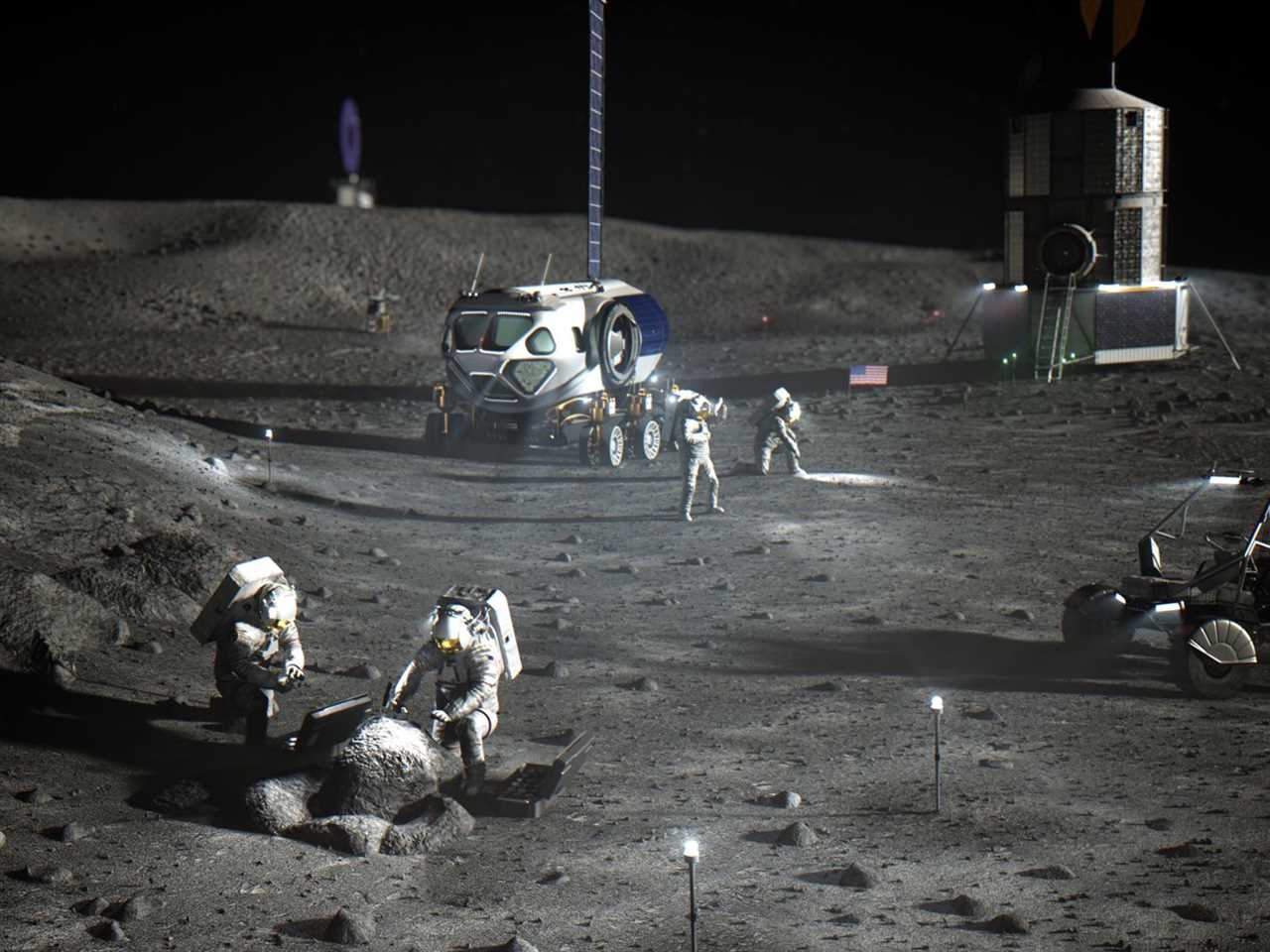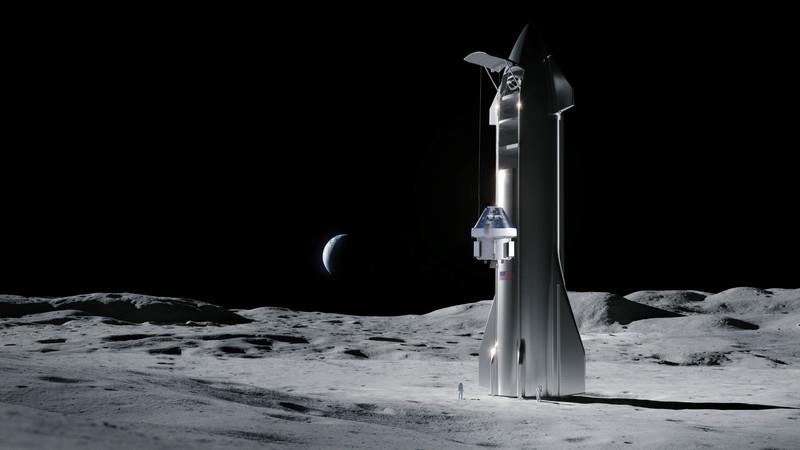
Putting humans on the moon is more political than you might think.
The first mission in NASA’s Artemis program finally took the Orion spacecraft on a trip around the moon, a huge step forward for the ambitious plan to bring humans to the lunar surface as soon as 2025. It’s also the beginning of the White House’s far-reaching ambitions for a permanent outpost on the moon.
The White House’s national science and technology council last week released its new “National Cislunar Science and Technology Strategy,” a wide-ranging document that explains the Biden administration’s objectives for cislunar space, which is the area under the gravitational influence of the Earth and the moon. The strategy outlines four primary goals that, broadly, seem to make a lot of sense. They include investing in research and development, cooperating with other countries, building communications networks in space, and boosting humanity’s overall situational awareness near and on the moon.
What this plan also hints at, however, is a range of open legal, political, and environmental questions about how life on the lunar surface should work.
“The test missions, like Artemis 1 going on now, and the next crewed mission and then the first landing, are fairly well laid out,” Scott Pace, the director of George Washington University’s Space Policy Institute, told Recode. “The question is, ‘Well, what comes next?’”
Part of the answer to that question is “advancing science.” The United States, for example, is interested in how to use the far side of the moon, a shielded zone of the moon that doesn’t experience radio frequencies coming from Earth, to make new types of astronomical observations. Developing resources and technology on the lunar surface could eventually make it easier to launch future missions to Mars.
But the government is interested in the moon for reasons that go far beyond expanding humanity’s knowledge of the universe. The White House’s new strategy emphasizes the “economic development activities” and “economic growth” available in cislunar space and on the moon, and also outlines the government’s political goals, including “realizing US leadership.”
“It’s very clear that this is not just about the research and the science, but it’s also going to be about the economic prospects from the moon,” explained Namrata Goswami, an independent space policy analyst. “Until now, the US has been very reticent to so clearly engage in a manufacturing use of lunar resources.”
Should the US succeed in its goals, the moon could eventually look quite different, Pace argues. Lunar orbit would be filled with many more satellites, including a lunar GPS network and a human space station capable of housing human astronauts that serves as a rest stop before they land on the moon’s surface. While there are no plans for a lunar city, there are proposals for a permanent outpost on the south pole of the moon, where crews might one day spend six-month rotations (China and Russia have announced plans for a lunar outpost, too). If NASA has its way, the lunar surface might eventually include a series of nuclear power plants, a resource extraction operation, and even something akin to moon internet. Given these plans, the US government estimates that the level of human activity in cislunar space over the next decade could exceed everything that’s happened there between 1957 and today, combined.

SpaceX
But the White House’s plans face several hurdles. Political tensions alone could be a major source of conflict, according to Michelle Hanlon, the co-director of the Air and Space Law Center at the University of Mississippi law school.
For one, there still isn’t a globally shared vision for what the future of the moon should entail. Just over 20 countries have signed the US-led Artemis Accords, a set of principles for, among other things, exploring and using the lunar surface. The former head of Russia’s space agency, unsurprisingly, said that the country would not support the Artemis program in its current form, and Congress has barred NASA from working with China since 2011. And while the White House continues to emphasize international collaboration and the moon itself is pretty large — it’s just under 15 million square miles — multiple countries could end up sparring over the same resources, like one particular landing location or a certain trove of materials.
These tensions could even impact an effort to create a common understanding of what’s going on in cislunar space, which is one of the government’s major goals. The White House has said it wants to expand access to data about space weather and satellite tracking in order to help with the emerging problem of satellite traffic management, and also create a catalog of all the objects on the moon. But it’s not clear how that will happen.
“I think the US is very far from achieving this,” Moriba Jah, the co-founder and chief scientist of Privateer Space, said in an email. “When it comes to space object catalogs in the US right now, this is pretty much developed and maintained uniquely by the US military/Department of Defense, which cannot be a fully transparent organization for obvious reasons.”
At the same time, there’s a more immediate problem that humanity has begun exporting to the moon: junk. The lunar surface is already littered with items that astronauts have left behind, including golf balls and nearly 100 bags of poop. Humans have also figured out ways to trash the moon without actually visiting. NASA purposely smashed a robotic spacecraft into the lunar surface in 2009 in a bid to study potential sources of water on the moon, and this past March, space junk believed to be from a Chinese rocket mission in 2014 crashed into the lunar surface. Space environmentalists are worried that some of the same environmental destruction that humans have created on Earth could become a problem on the moon and in its lunar orbit.
Ideally, the emerging space economy would focus on preventing pollution in space and avoiding single-use machinery, such as satellites, rovers, and rockets, as much as possible.
“We need to make those things reusable and recyclable,” explained Jah, who is also an aerospace engineering professor at UT Austin. “For the ones that can’t be, how do we dispose of them properly so that they’re not causing a detrimental environmental impact, versus just abandoning stuff?”
Of course, the White House’s recently released strategy is just a first draft of what the government’s plans for the moon might ultimately resemble, and there’s no guarantee the US vision will be the one that plays out. It’s increasingly clear, however, that the Artemis-era space age will come with major challenges. As humanity ventures deeper into space — and onto the moon — humans risk introducing the same issues that we still haven’t worked through here on Earth, including conflict between countries, damaging the environment, and even the challenge of preserving our history.
“It would be tragic for Neil Armstrong’s blueprint to be erased, either inadvertently or maliciously, because of all these activities on the moon,” said Hanlon. “It’s gonna get very crowded very soon.”
----------------------------------------
By: Rebecca Heilweil
Title: The White House’s plan to colonize the moon, briefly explained
Sourced From: www.vox.com/recode/2022/11/22/23473483/white-house-joe-biden-moon-artemis-permanent-outpost-spacex
Published Date: Tue, 22 Nov 2022 18:50:00 +0000
Did you miss our previous article...
https://consumernewsnetwork.com/politics-us/feds-powell-sparked-backlash-from-warren-and-labor-advocates-over-job-loss






